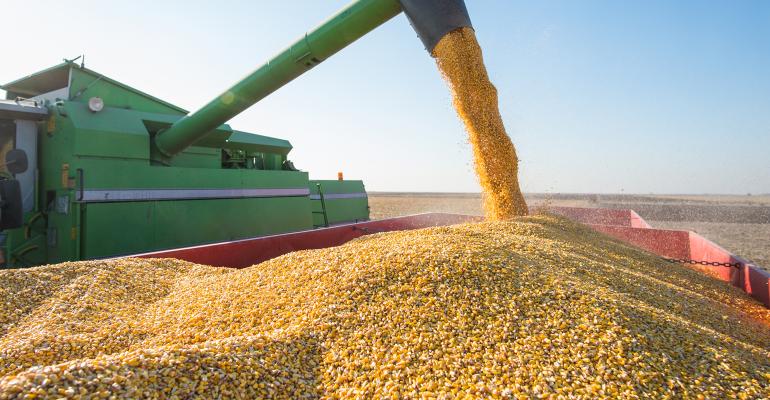October 28, 2019

Source: American Association of Grain Inspection and Weighing Agencies
Farmers across the country, will probably tell you, they aren’t sure what they may find in a field. Let’s face it, it’s been a wild weather year. A wet-spring, followed by a summer that was different everywhere you went and a fall that is shaping up to be a wet one.
For many, it means the grain being harvested is not of the best quality and that presents a host of challenges.
Grain challenges
Tom Dahl, president of the American Association of Grain Inspection and Weighing Agencies (AAGIWA), said the quality challenges may vary by region. Some may be seeing weathered grain while others may be seeing green or immature grains. Or, it could be frost damaged kernels, mold or fungus issues. Any of these create marketing issues for producers. For users, whether they are processors, feeders, or millers, it is a matter of understanding the quality they are receiving so it can be used for its best purpose.
Central to these challenges is accurately measuring the crop quality. Both buyers and sellers can benefit from clearly understanding the quality of the grain or oilseeds they are handling.
Dahl said many have already seen concerns over test weight in corn; accurate and repeatable test weight results require consistent testing procedures, he commented.
According to Dahl, there will be issues when poor quality grain is being put into storage for a longer period than normal. Mycotoxins, for example, typically only become worse during storage when conditions are already questionable. Producers and users need to understand that poor quality conditions can affect storability and long-term quality condition.
Drying grain
Iowa State University Professor Charlie Hurburgh noted that 2019 continues the chain of growing seasons with extremes and rapid changes beyond our long-term experiences. He expects test weight in corn to be down and notes that low test weight also often means more handling breakage, shorter storage life and higher drying costs. He said there have been reports of mold damage in the field, so producers should be sure to be alert for mycotoxins. At-harvest grain management will be particularly important this year. He said the key at-harvest
activities are cooling as fast as possible and drying as rapidly as drying systems will allow. He noted that grain with field mold already present is particularly vulnerable to further spoilage if drying is not done quickly.
Moisture testing
Dahl said producers and users can also benefit by making sure the testing technology being used is the most up-to-date. Dahl cautioned that the old 2 Mhz corn moisture meters are still in use in many grain regions. There is an issue of “high moisture rebound” that can occur with the old technology. The newer, 149 Mhz moisture meters have reduced or eliminated that problem. He said that all Official Grain Inspection Agencies use this new technology.
Even the proper sampling methods can have a huge impact when grain loads have varied quality issues. Dahl noted that farmers often will be harvesting right through wet spots and variable maturity. A grain quality sample that is not representative of the entire load may only mask the poor grain conditions that end up in storage.
Consistent, accurate test results can be best assured through using an Official Grain Inspection Agency. These are agencies supervised by USDA’s Federal Grain Inspection Service.
Dahl said when a user chooses an Official Grain Inspection Agency the user will receive:
The most accurate inspection system, monitored daily by USDA to ensure everyone with the official system across the country provides consistent results, ensuring grades hold-up every day.
The only inspection system with all equipment and personnel aligned to USDA’s central grain quality reference point. Official Inspection Agency equipment and personnel are the only ones aligned to USDA’s central reference point at the National Grain Center (NGC). The NGC is the sought out reference for grain quality tests both in the U.S. and internationally. Only Official Inspection brings that confidence to your facility.
The only inspection organizations that can issue a certificate backed by the United States Grain Standards Act (USGSA). USDA certificates are considered prima facie evidence in all courts of law providing the user with the legal backing no other certificate can.
Unbiased decisions. By law, official agencies can have no interest in grain companies or grain related companies.
You May Also Like




